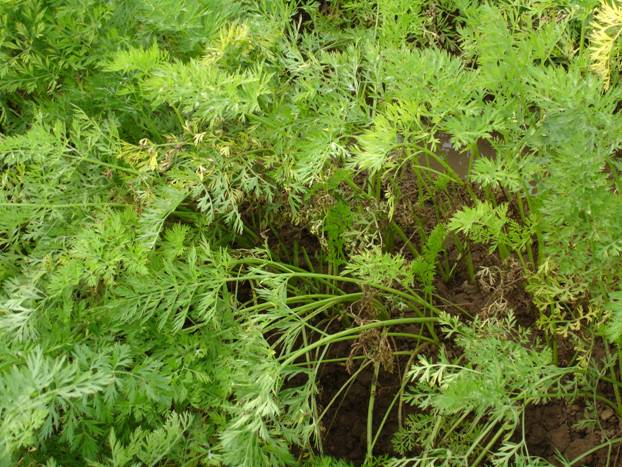
The BASF and ADAS sponsored Sclerotinia monitoring system for carrot growers is indicating that the first fungicide treatments will likely be required where main crops are near to achieving full ground cover.
Dr. Peter Gladders from ADAS Boxworth explains that, although Sclerotinia germination is lower than usual at the reference site in Norfolk and Nottinghamshire so far, intensive irrigation or more rainfall would allow sclerotia to germinate in carrot crops. "Main crops sown in late April now at the 7 to 8 leaf stage and so these crops have almost achieved complete ground cover in the beds which will favour sclerotinia activity as soils remain moist. This is the time to apply the first fungicide just before canopy closure. "
He points out that the recent hot dry weather is inhibiting sclerotial germination, but that irrigation or rainfall could encourage germination when there are moist conditions at the soil surface. "Any area with irrigation or significant rainfall in last few weeks could be at higher risk than the monitored locations. Crops should be inspected regularly not just for Sclerotinia but also for Alternaria leaf blight, Cercospora leaf blight and Powdery Mildew."
Growers should also log on every week to the carrot Sclerotinia Monitoring link on www.agriCentre.basf.co.uk in order to assess their disease risk and plan an effective preventative disease control programme at the right time. The ADAS/BASF Sclerotinia monitoring system monitors patterns of germination each week and indicates the extent of disease risk and the need for fungicide treatment.
Robert Storer, Field Vegetable Product Manager for BASF, points out that the protectant fungicide Signum provides broad spectrum disease control of Sclerotinia, Alternaria and Powdery Mildew. The warm conditions maybe encouraging Alternaria and mildew. Trials data also show that Signum gives good control of diseases responsible for the loss of yield and quality in carrots such as Cercospora, Black Liquorice Rot and Acrothecium."
"Being a protectant fungicide, Signum needs to be placed at the base of the plant where infection starts and where old leaves come into contact with the ground. The first Signum spray should be applied before the crop canopy has closed over. A closed canopy not only creates the right conditions for further infection, but shields the base of the plant from fungicide sprays," he says.
A protectant and systemic fungicide, Signum contains 267g/kg boscalid and 67g/kg pyraclostrobin, formulated as a water dispersible granule. It is recommended in carrots as a protectant spray or at the first signs of disease for the control of Sclerotinia, Alternaria and Powdery Mildew at a dose rate of 0.75 to 1 kg/ha in 200-900 litres of water. Two applications can be made to the crop. It is subject to LERAP B and has a harvest interval of 14 days in carrots. It should be alternated in a programme with other fungicides with an alternative mode of action as part of an anti-resistance strategy.
